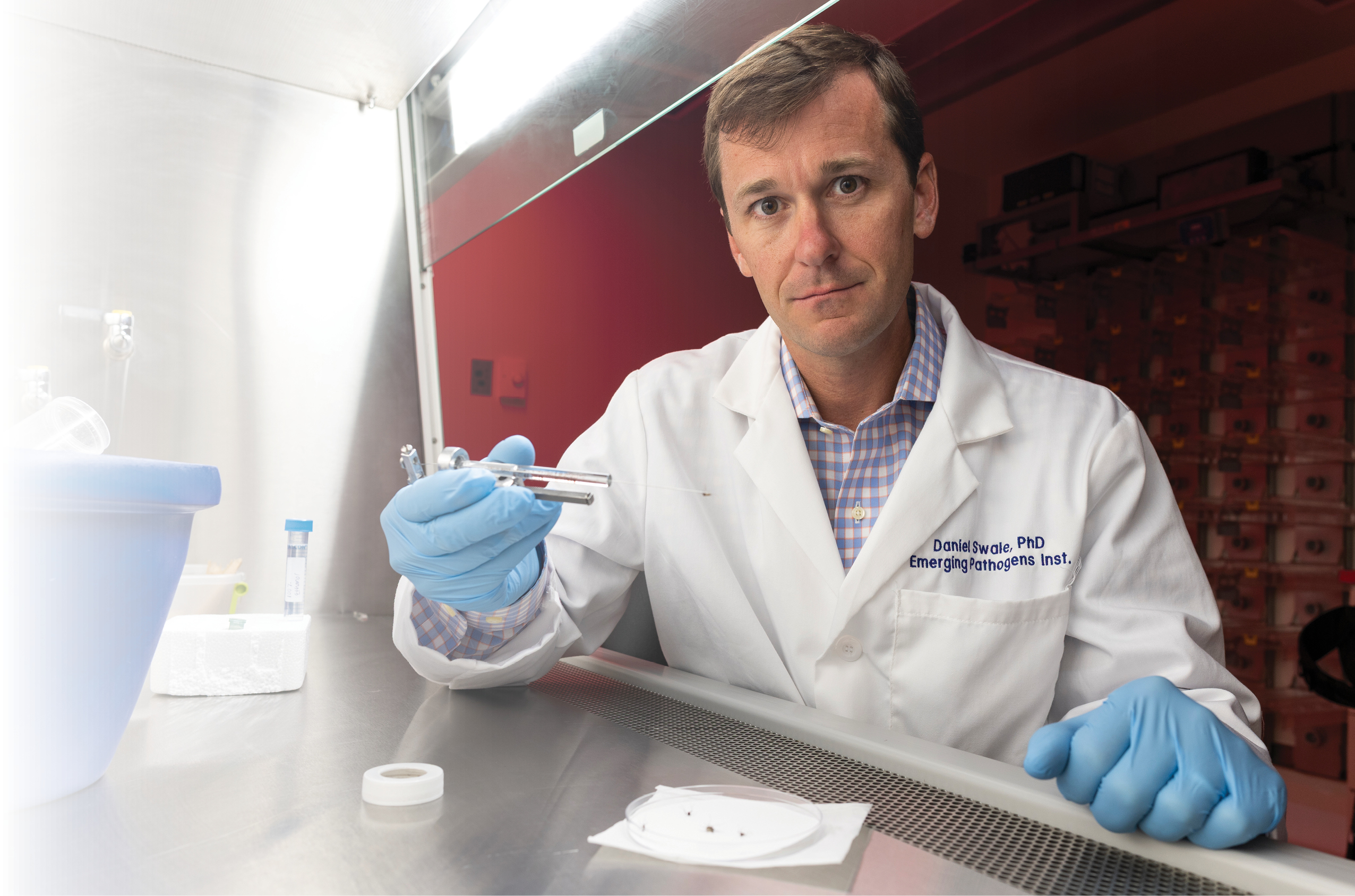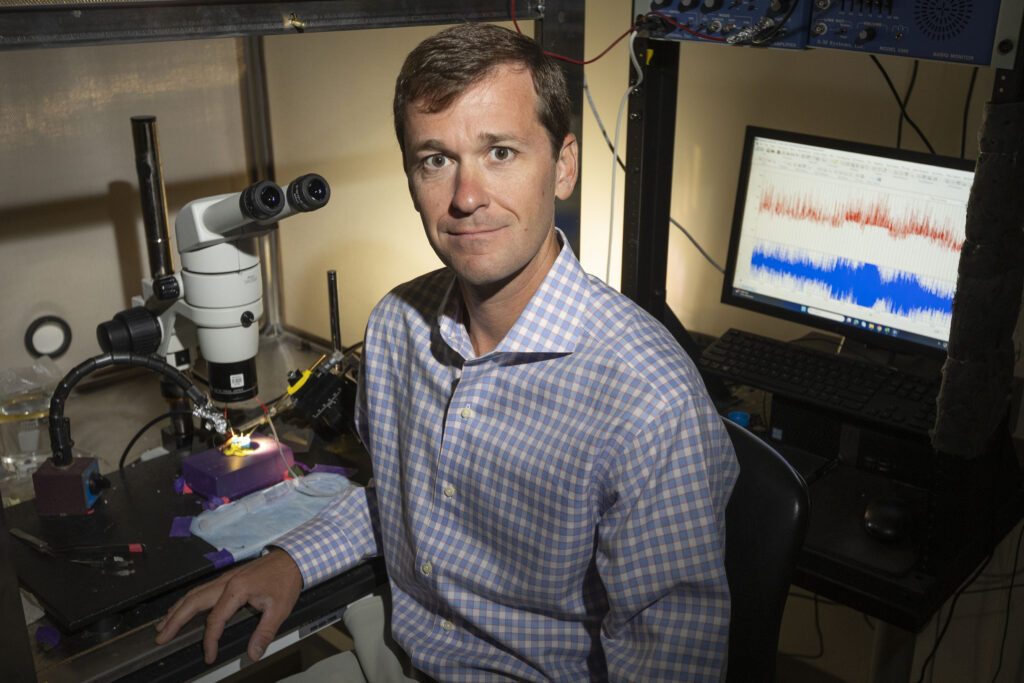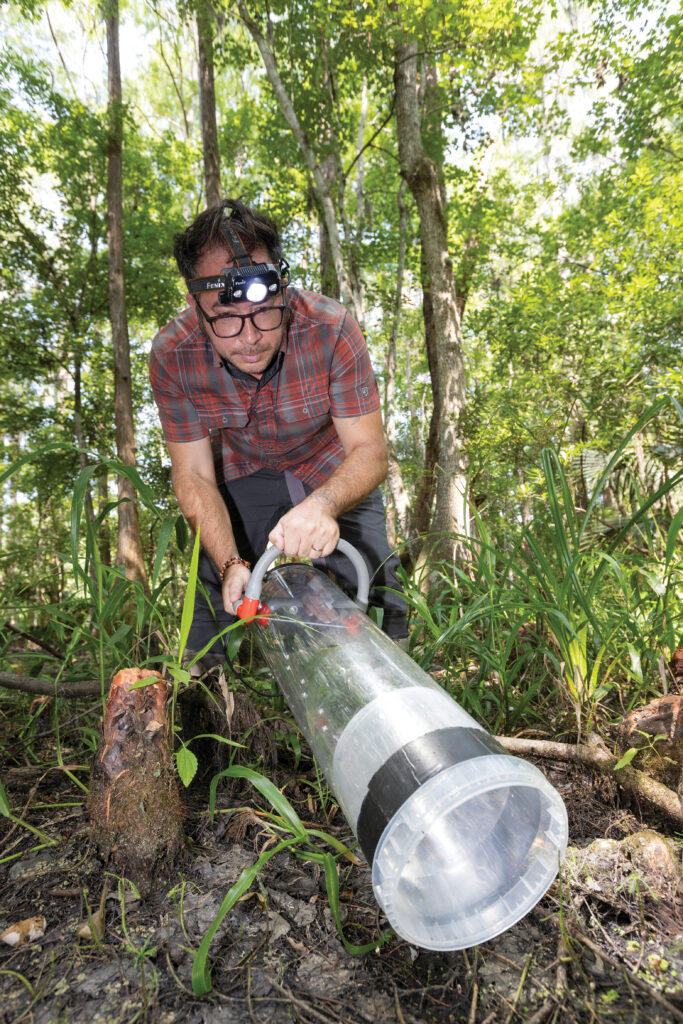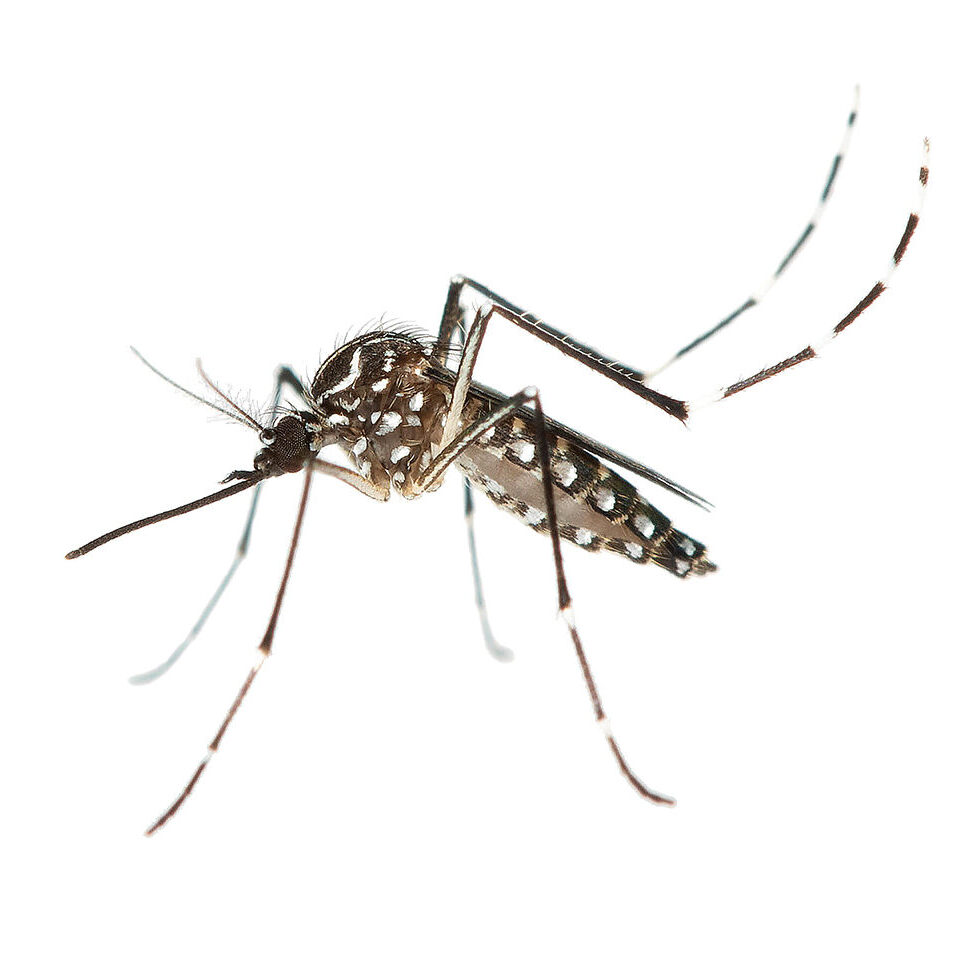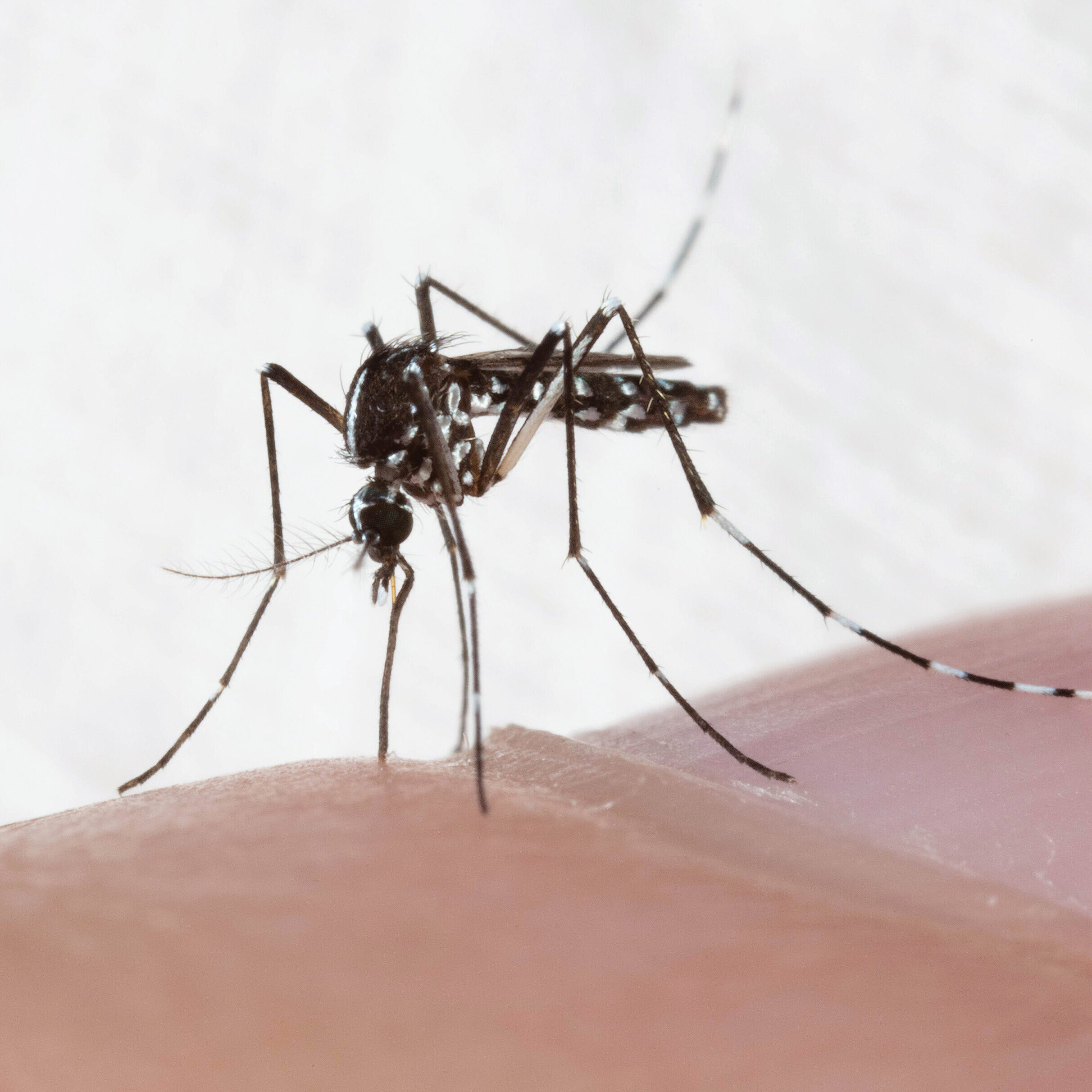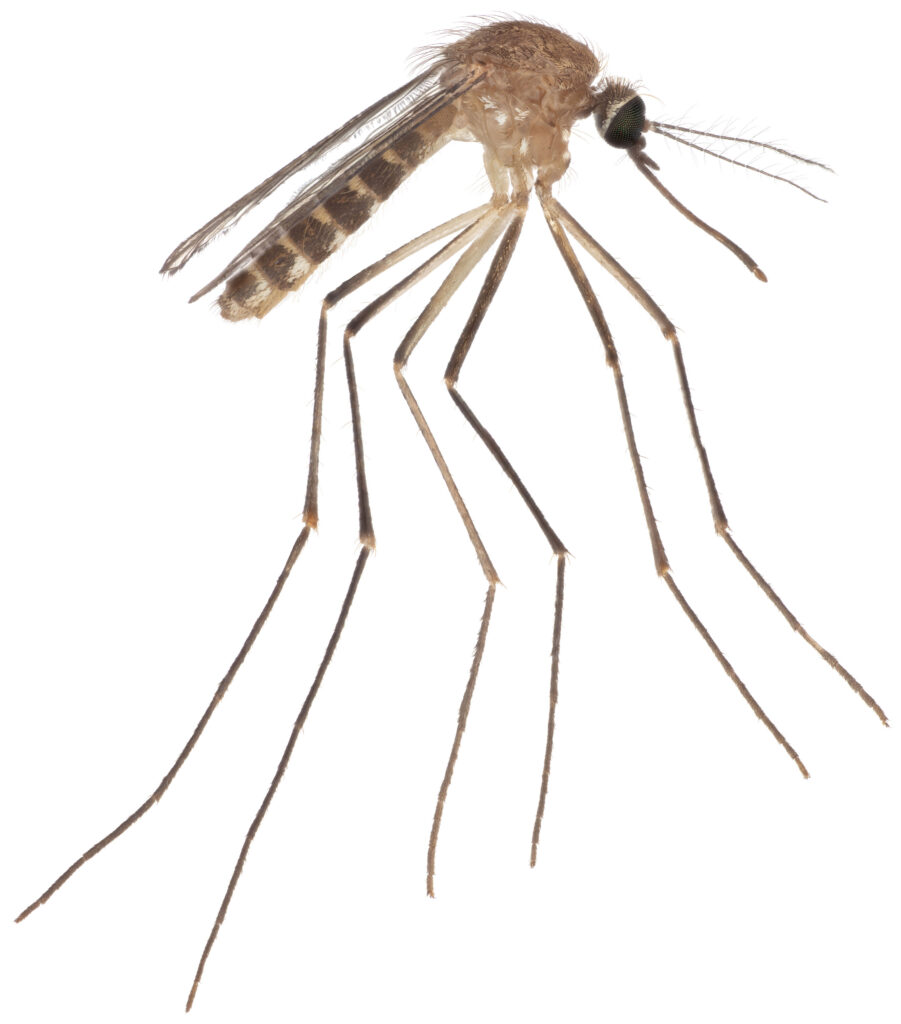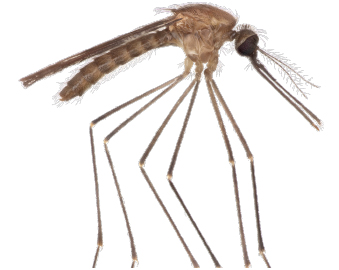U
niversity of Florida researcher Daniel Swale describes his work in the simplest of terms: He studies the most lethal creature on Earth.
“Mosquitoes are a nuisance to us in the United States but, in other parts of the world, it’s a life-or-death issue,” he says. “Mosquitoes are the deadliest animal in the world.”
Worldwide, mosquito-borne diseases result in more than 1 million deaths each year, according to the American Mosquito Control Association.
Swale is one of UF’s “mosquito hunters” — researchers who track and combat the insects. While not part of a formal team, they’re united by a shared insect interest: Swale focuses on developing new insecticides and techniques that kill mosquitoes or prevent them from feeding and spreading diseases. Medical geography Professor Sadie Ryan tracks the patterns of mosquito-borne diseases across countries and continents. Entomologist Lawrence Reeves is the first line of mosquito defense, combing Florida’s swamps and wildlands in search of new species and identifying specimens from the state’s mosquito control districts.
For Swale, the career path to being a mosquito expert was a lot like the insect’s flight pattern — anything but a straight line. He earned his doctoral degree in insect neurotoxicology at UF in 2012. After that, he left the insect world to work at Vanderbilt University on drug development for diabetes and high blood pressure. He returned to the insect world in 2015, joining the entomology faculty at Louisiana State University. His research aimed to define the physiological role of understudied systems in different insect tissues.
Swale came full circle with UF in 2022, landing a job in the same building where he earned his doctoral degree. He now serves as an associate professor of insect toxicology and physiology and is the associate director of training and special projects at the Emerging Pathogens Institute.
In late 2024, Swale earned a three-year, $2.3 million grant from the Bill & Melinda Gates Foundation to control the malaria mosquito. Because of chronically high levels of insecticide resistance among mosquitoes, he is using an innovative method to speed up the discovery and development of new ingredients to kill them. The goal is to identify five to 10 natural or man-made “scaffolds” — substances that kill mosquitoes after they land on a treated surface such as a bed net. Swale and his team will then optimize the chemical structure to make them more lethal to mosquitoes and safe for people, animals and honey bees.
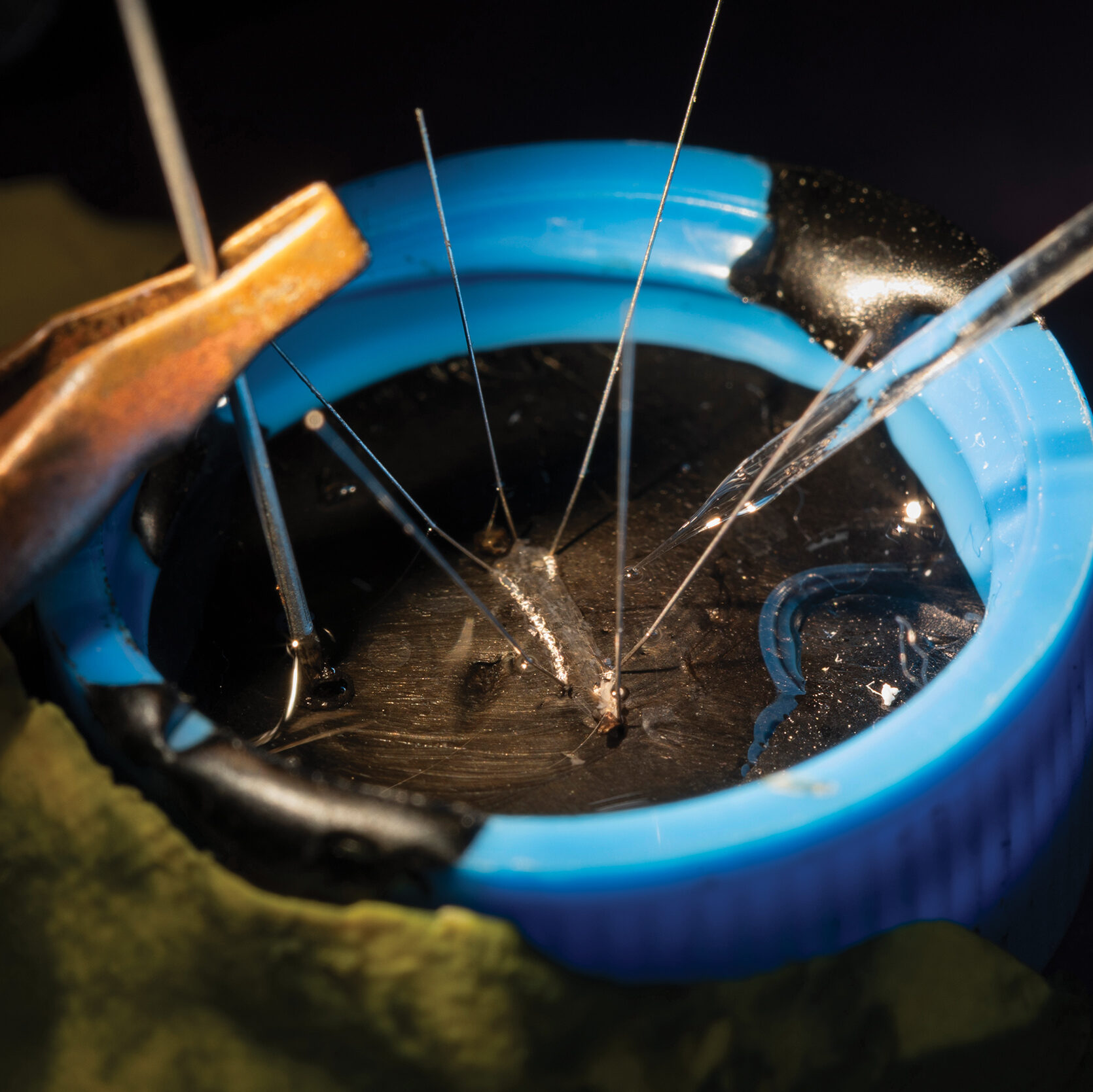
That work is particularly important because the long-term pipeline for new insecticides — especially for mosquitoes — is “pretty bleak,” Swale says. The agrochemical industry regularly develops insecticides for pests that attack soybeans, corn, cotton and other cash crops. Mosquitoes, he notes, not so much.
“The work funded by the Gates Foundation has potential to lead to the discovery of new insecticides that can be incorporated into the pipeline for development and hopefully be used in sub-Saharan Africa to reduce the malaria burden,” he says.
The compounds being developed by Swale and his colleagues can also be used in the United States and other regions to control mosquitoes that transmit other pathogens, such as the dengue and Zika viruses, to humans.
Swale’s other mosquito research includes Centers for Disease Control and Prevention funding to develop new mosquitocides and repellents with a focus on discovering naturally occurring chemicals. Additionally, a $1.9 million National Institutes of Health grant aims to better understand how bacteria change the feeding behavior and biology of certain arthropods, allowing diseases to spread more easily.
“Once we understand how this happens, we can develop approaches to prevent pathogen transmission from arthropods to humans,” Swale says.
Across Swale’s human and insect research through the years, there was one constant: an abiding interest in ion channels — the gatekeepers between the inside and outside of cells.
“When you modify the function of these channels with a chemical, you can change the function of a particular cell and elicit a desired response. It’s a way to kill an insect and it’s also an approach used for various human pharmaceuticals to reduce impacts of various diseases. But in humans, we can use pharmaceuticals to either enhance or kill a particular system,” he says.
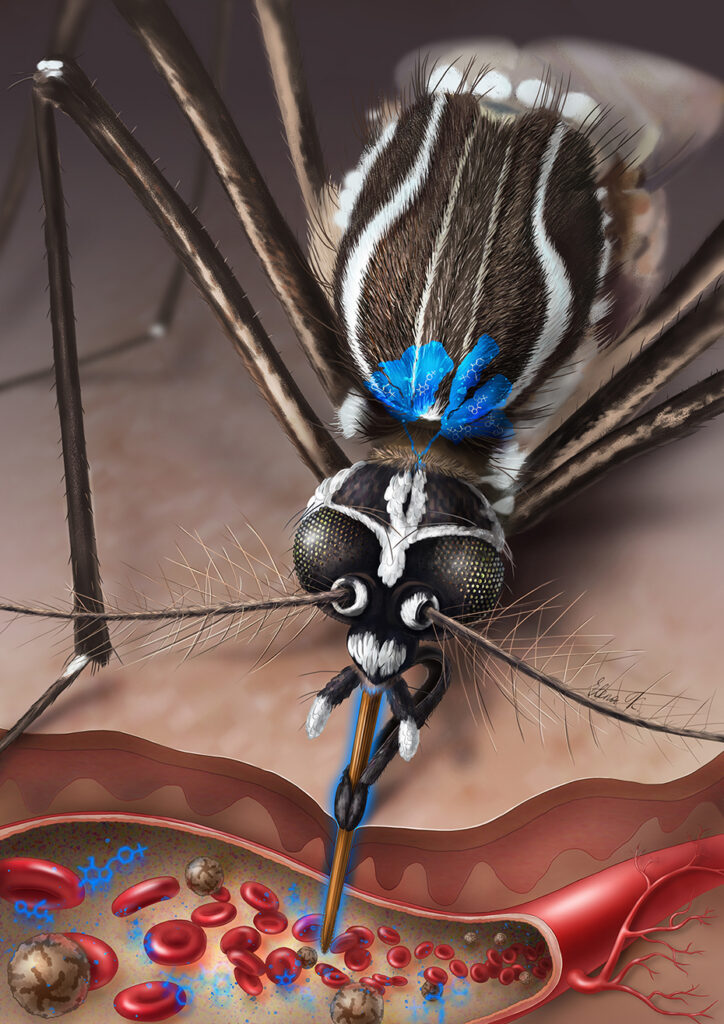
Swale is particularly interested in better understanding the role potassium ion channels play in insects and testing their toxicological relevance. Despite the channels’ importance for cellular function, few insecticides target those pathways. Swale hopes to address that gap in technology by developing new, potassium-directed compounds.
“Essentially, we want to know what these understudied channels are doing in the insect. Can we kill the insect or prevent it from feeding by modifying the function of these channels with chemistry?” he says.
A 2022 study by Swale’s group found that dengue-carrying mosquitoes need effective salivary glands to feed efficiently and transmit the virus to a host. They later showed that modifying potassium ion channels’ function in mosquitoes’ salivary glands prevented salivation and inhibited blood feeding. That, in turn, reduced mosquitoes’ ability to catch and transmit the dengue virus or other arboviruses.
“When we manipulate that system, it shuts off the salivary gland and gives them dry mouth. Similar to humans, without saliva, the mosquito can’t feed. So, the mosquito doesn’t suck blood,” he says.
Through NIH and USDA funding, Swale has shown the same technique of inhibiting salivary gland function with potassium ion channels also has applications in other insects, including ticks and plant-eating pests such as aphids and Asian citrus psyllids that spread citrus greening disease.
Before long, Swale hopes to develop a new insecticide just for mosquitoes. That would buck a longtime trend of repurposing other agricultural chemicals to fight mosquitoes, he says.
A worldwide hunt
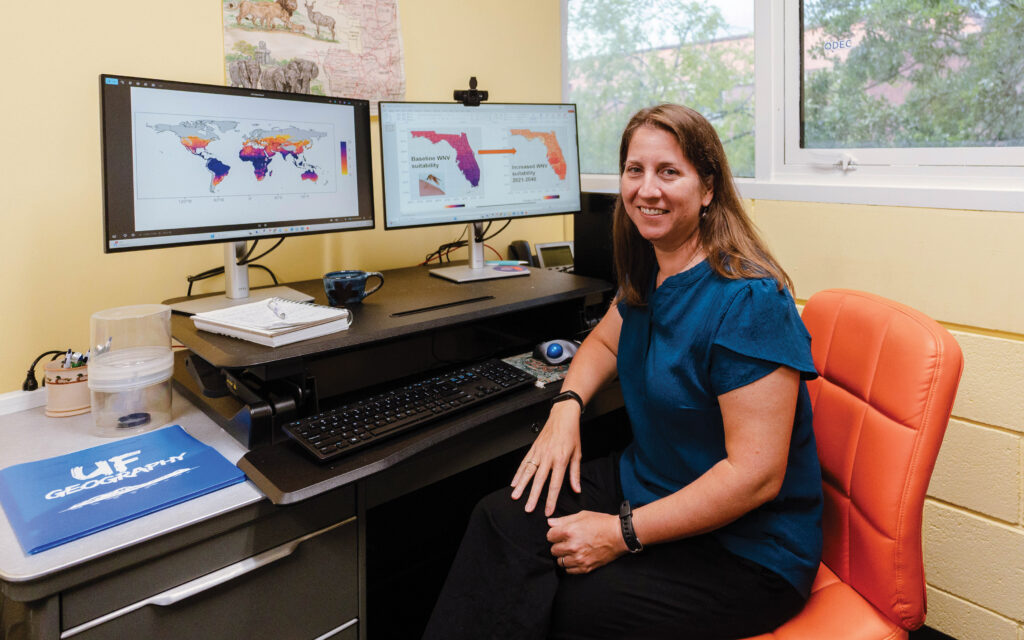
Ryan, the medical geographer, documents the big-picture patterns and movement of mosquito-borne diseases around the world. That helps the world anticipate how malaria, dengue fever and the Zika virus spread with population and climate changes.
One day nearly two decades ago, her work took an intensely personal turn. After doing research in Ghana, Ryan caught a flight to California and then another to Tennessee. Along the way, she developed an intense fever and high-pitched cough.
“I was virtually incapacitated flying home to California. Then, it hit me: Do I have malaria?” she says.
Her husband considered flying to Canada to get artesunate, a drug that kills the malaria parasites in red blood cells. After days in isolation, Ryan’s 107-degree fever eventually broke. She vividly recalls the hallucinations brought on by malaria and local mosquito-control experts hanging traps outside her home as a precaution against further spread.
Ironically, Ryan’s Ghana trip wasn’t even about mosquito research. She was there to study parasites in baboons. But long before that, Ryan had written a junior-year paper about malaria in populations with high rates of HIV.
“I was already fascinated and really curious about this disease that’s been with us absolutely forever,” she says. “And I wanted to know the best ways to respond to it globally.”
These days, Ryan stays busy tracking mosquito movements that shift with climate patterns. There’s no shortage of work: Many regions of the United States are seeing longer mosquito seasons due to warmer temperatures.
In 2024, Ryan and her collaborators found that climate change could drive a shift in the range of Anopheles stephensi, a mosquito that transmits malaria. Known as a common malaria mosquito in the Middle East and India, it has left its original range and spread to parts of Africa. Their work was the first of its kind to use mapped temperature-driven models for current malaria transmission risks posed by Anopheles stephensi. That allows scientists and policymakers to compare risks for malaria and other diseases using climate and geographic variables.
More broadly, Ryan says medical geography helps quantify the patterns of how diseases spread and provides tools to capture that. The best-known examples of that are the COVID-19 dashboards that appeared during the pandemic.
“Medical geography gives us a language to talk about the context and mechanisms of change in a changing world,” Ryan says. “I use maps as a way to communicate public-health interventions or to reach decision makers: Where should we be anticipating change? Where should we be thinking about allocating resources? For me, that’s a really powerful tool to get the science translated to action.”
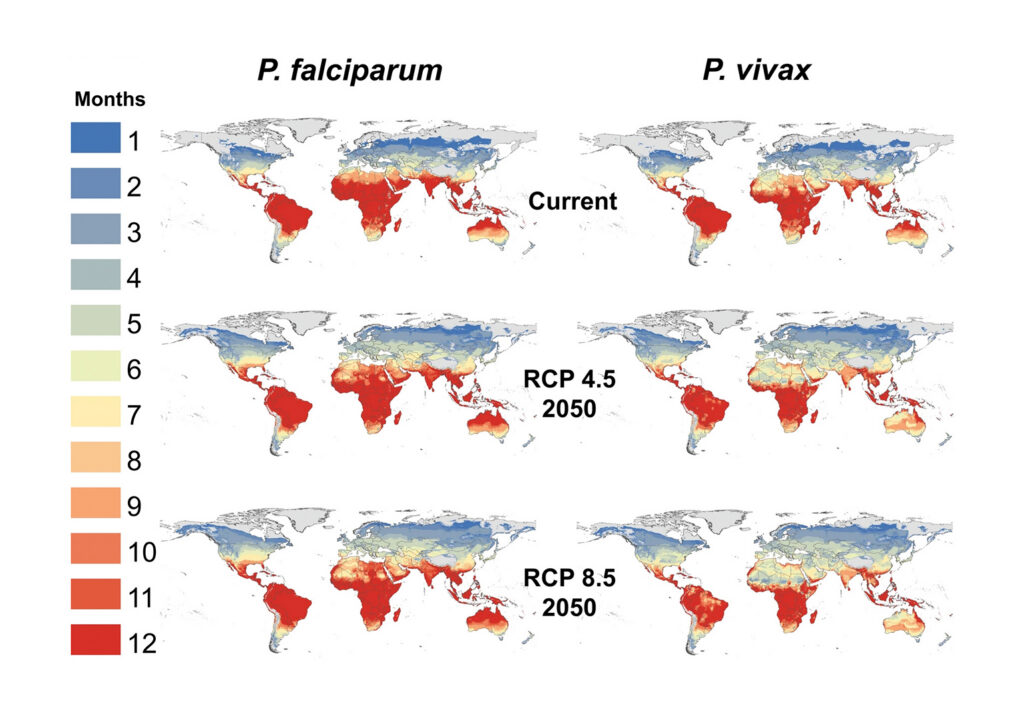
Another of Ryan’s most important works detailed how climate change is driving the global expansion and redistribution of mosquito-borne viruses. Within the next century, a worst-case scenario could put nearly 1 billion people at risk of new exposure to viruses carried by the Aedes aegypti (yellow fever mosquitoes) and Aedes albopictus (“Asian tiger”) mosquitoes, the researchers found. The two mosquitoes can spread a host of diseases, including dengue fever, chikungunya and Zika.
Her work is funded through multi-year, multi-institution research projects. She is a co-principal investigator on a trio of National Science Foundation projects as well as grants from the National Institutes of Health, the Centers for Disease Control and Prevention and the Wellcome Trust.
Her work also revealed which regions of the world would be facing new risks in the future: The United States, Canada, Europe and east Asia are among the areas at risk for new establishment of Aedes albopictus. Meanwhile, its transmission potential is expected to drop in tropical Latin America, western Africa and most of southeast Asia if temperatures keep rising.
“It’s important to know where these diseases could pop up, so we can plan for intervention,” Ryan says.
For Ryan, tracking long-term mosquito trends involves analyzing data and insect movements. The insects are opportunistic and adaptable, hitching rides on international cargo and moving into new areas that were once inhospitable. Once the province of the tropics, mosquitoes carrying the dengue virus have appeared in France and, more prevalently, Italy. Aedes albopictus, which Ryan calls the “cooler weather mosquito”, has turned up in some unexpected places like Chicago storm drains and tires in snow piles in Boston.
Intensifying development also presents opportunities for mosquitoes to adapt and proliferate. The yellow fever mosquito is a particularly opportunistic urban dweller. Undisturbed puddles and neglected containers can be fertile breeding grounds – with plenty of humans to feed on nearby. That’s one thing that propels Ryan and her work.
“I’m really fascinated by these mosquitoes and what happens when you include their invasive abilities on top of their known dynamics,” she says. “That brings a whole new element of what we need to be watching. And how on earth do you do interventions to control them?”
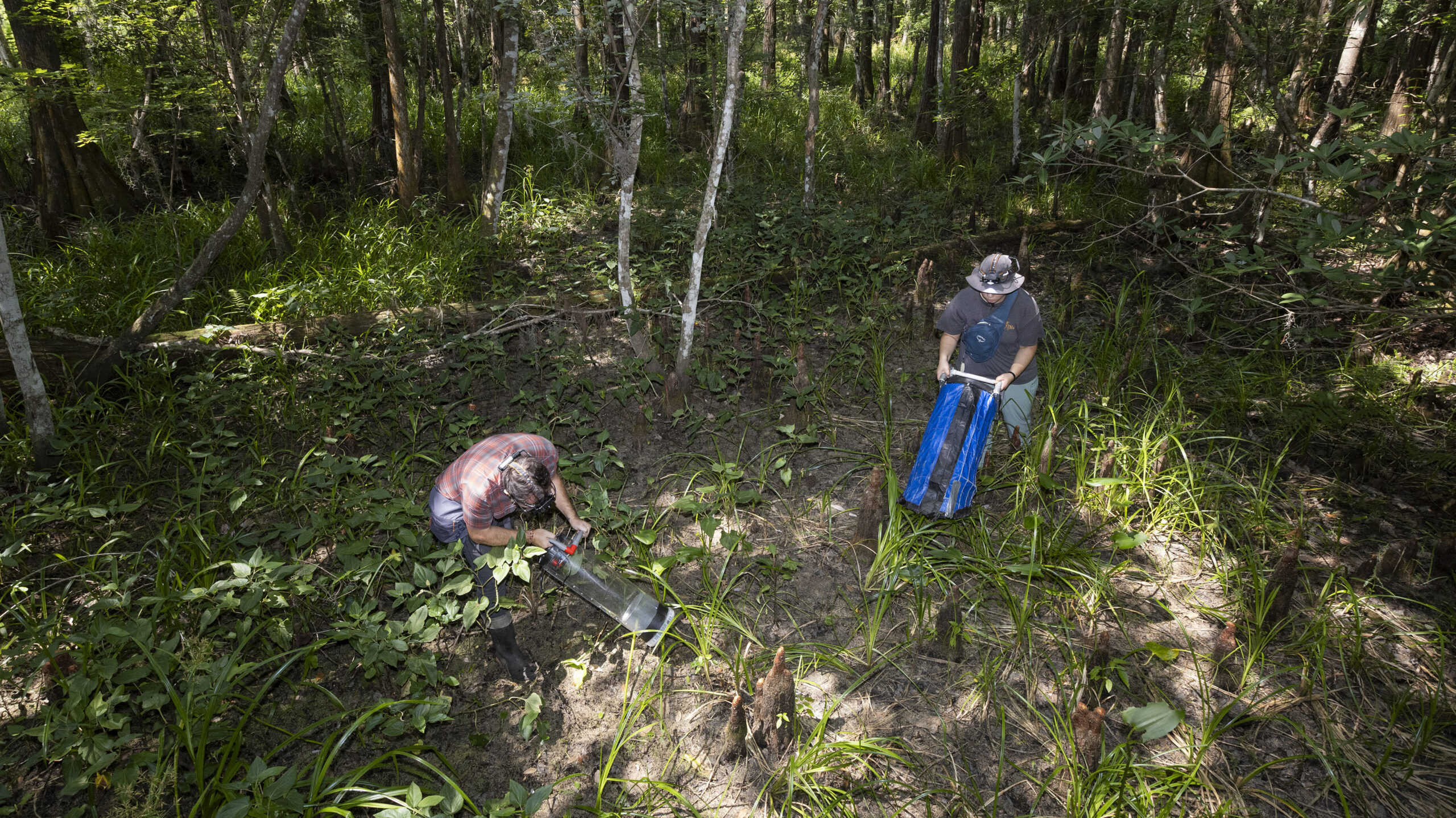
At home in the swamps
As an entomologist, Lawrence Reeves sees mosquitoes differently than most Floridians. That even trickles down to his yard work. Reeves is always looking at the mosquitoes that are biting him. Instead of swatting the pests, he tries to identify them. On a recent day, Reeves saw an Aedes scapularis — which can transmit yellow fever — feeding on him. It was a species familiar to Reeves. He and his collaborators were the first to document its arrival in mainland Florida. The mosquito Reeves caught in his yard is the species’ northernmost specimen ever found.
“I ran inside with this mosquito on my arm to get a collection tube. Now, it’s in my freezer,” he says.
Reeves’ work takes him to the front lines of mosquito hunting, tromping through swamps and along river banks in search of newly arrived species. At the Florida Medical Entomology Lab near Vero Beach, he uses DNA to catalog types of mosquitoes and their ranges — information that can be crucial to the state’s 63 mosquito control districts. By analyzing the DNA in mosquito blood meals, Reeves also sheds new light on how pathogens move through the environment and potentially affect humans.
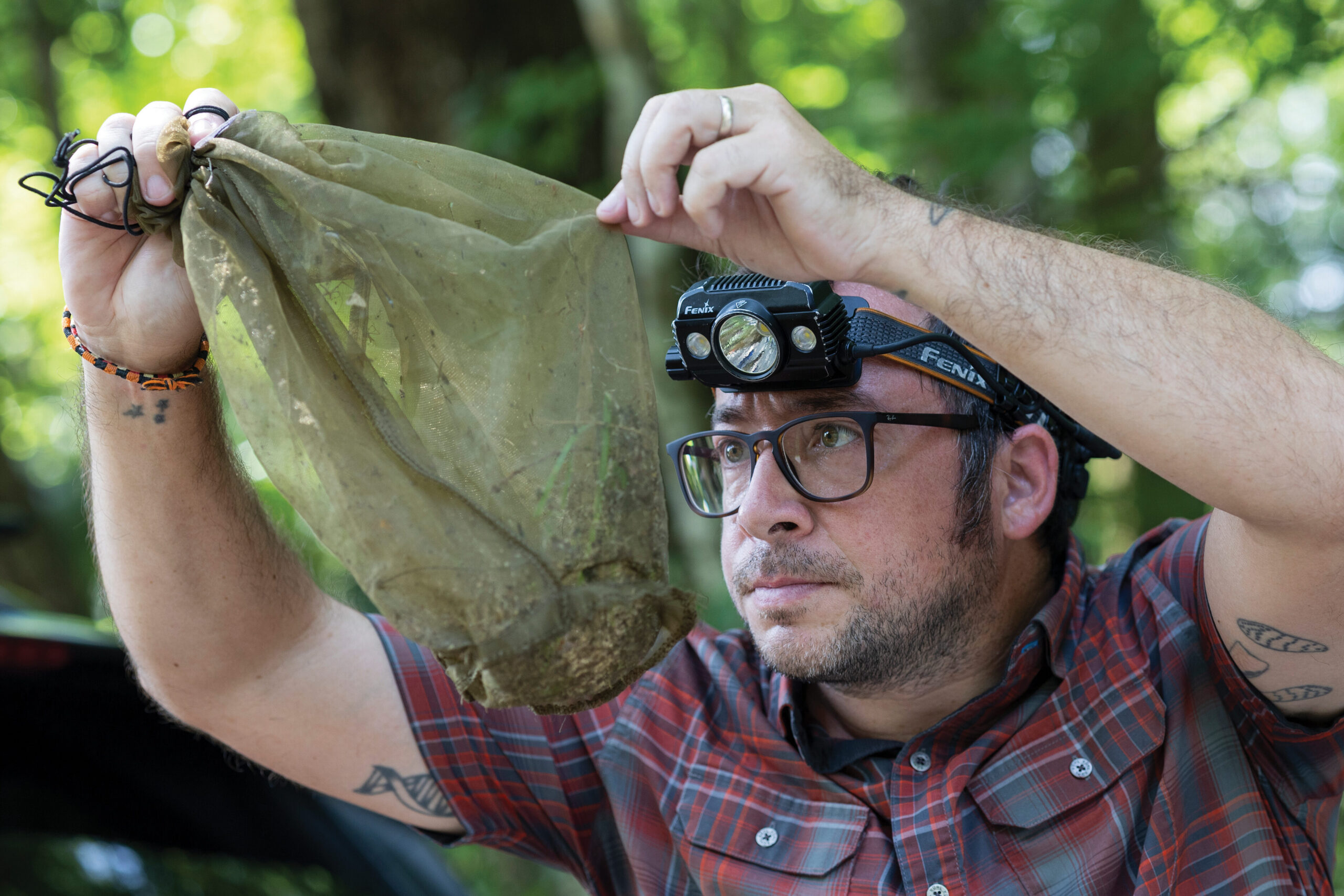
In 2023, Reeves and his collaborators found that a new mosquito species, Culex lactator, had established a permanent presence in three Florida counties. After first being detected in Miami-Dade County in 2018, new populations of the species were identified more than 100 miles northwest in the Fort Myers and Naples areas, and more than 50 miles north into Broward and Palm Beach counties. Scientists are still working to determine if the species is a carrier of West Nile virus, which Reeves considers the most consistent and widespread mosquito-borne disease threat in Florida. Two years before the 2023 findings, Reeves and his team made another big discovery: The first populations of Aedes scapularis were in mainland Florida. Before that, just three larvae of that mosquito were found only once before in the Florida Keys in the 1940s.
Being vigilant about new mosquito species is crucial because their arrival raises the risk of transmitted diseases, Reeves says. Of about 90 known mosquito species in Florida, about 18 are non-native. Six of the 17 most recent non-native mosquito species have been identified in the past seven years.
“We have DNA sequences for 95% of the mosquitoes that are known in the state. Anytime we find something that looks questionable or new, we sequence the DNA to compare with the known species and determine if a specimen represents something known or unknown,” says Reeves, an assistant professor of entomology.
Most of Reeves’ funding comes from federal and state agriculture departments. His other work includes research to better understand how malaria spread during a 2023 outbreak in Florida. State funding also supports UF’s Applied Mosquito Research Program, which addresses pesticide issues and general mosquito control. Under that program, Reeves works to make mosquito control more sustainable and environmentally friendly by studying how biodiversity and ecosystems are affected.
Reeves also spends considerable time and energy developing detailed images that help mosquito control officials identify the insects more easily and accurately. In Reeves’ world, distinguishing between mosquito species involves minutiae like the number of hairs on a particular joint. Those small but crucial details helped to prove the Culex lactator had spread far afield to Florida’s west coast, Reeves says.
In addition to identifying new mosquito species, Reeves has an intense interest in the animals they bite. Some mosquitoes target birds and mammals. Others prefer feeding on the blood of fish and lizards. One type of Florida mosquito takes flight at night, homing in on frogs by tracking their singing sounds. Knowing which animals are targeted by mosquitoes is important because the West Nile, Eastern equine encephalitis and other viruses circulate among wildlife and occasionally spill over to humans, he says.
Reeves’ interest in mosquitoes’ blood feeding habits also led to a groundbreaking discovery in 2018. Reeves, then a graduate student at UF, collected many Uranotaenia sapphirina — a common mosquito in the eastern United States — and identified DNA from the blood in their guts. But something was amiss in their blood-feeding samples: DNA analyses consistently failed, meaning the insects’ targets remained a mystery. Frustrated in the lab, Reeves took to the field. He spent a night in a swamp along the River Styx near Gainesville, eventually finding the mosquitoes feeding on worms and leeches. The resulting paper was the first known evidence of a mosquito that only feeds on invertebrates’ blood. More broadly, the findings indicated that adult mosquitoes feed on a much wider range of hosts than was previously known.
“By understanding which mosquitoes bite which animals, we can better understand how these pathogens move through the ecosystem,” he says.
Mosquitoes and disease
Aedes aegypti (yellow fever mosquito)
Pathogens: yellow fever, dengue, Zika and
chikungunya viruses
Regions: Aedes aegypti occurs in tropical and subtropical regions, but the pathogens it transmits vary by region. Dengue is found worldwide; Zika is present in the Americas, Southeast Asia and the Pacific islands; Yellow fever is in Africa and South America; Chikungunya affects Africa, Asia, Europe and the Americas.
Disease symptoms: High fever, severe headache, joint and muscle pain, rash (dengue); Fever, chills, jaundice (yellow fever); Mild fever, rash, conjunctivitis; linked to birth defects like microcephaly (Zika); Fever and severe joint pain (chikungunya)
Aedes albopictus (Asian tiger mosquito)
Pathogens: dengue, Zika and chikungunya viruses
Regions: Native to Asia, Aedes albopictus is now found in tropical and subtropical climates worldwide, where it transmits the dengue and chikungunya viruses in many of the countries
it inhabits.
Culex quinquefasciatus (southern house mosquito)
Pathogens: West Nile and St. Louis encephalitis (SLEV) viruses
Regions: Culex quinquefasciatus and the closely related Culex pipiens occur in tropical and temperate regions worldwide, where both can transmit West Nile virus. In the U.S., both can transmit St. Louis encephalitis virus.
Disease symptoms: 80% of West Nile cases are asymptomatic, others have fever, headaches and body aches; Most people with SLEV are asymptomatic but severe cases can cause brain inflammation or meningitis.
Anopheles quadrimaculatus (common malaria mosquito)
Pathogens: human malaria parasites
Regions: This mosquito lives throughout eastern North America. Malaria has been eradicated in the U.S. since the 1950s, but remains a severe problem in parts of South America, Africa, and Asia, where it is transmitted by other Anopheles species.
Sources:
Lawrence Reeves
Assistant Professor of Entomology
lereeves@ufl.edu
Sadie Ryan
Professor of Medical Geography
sjryan@ufl.edu
Daniel Swale
Associate Professor of Insect Toxicology and Physiology
dswale@ufl.edu
Hear the Story
The audio version of this story is available on our YouTube.

